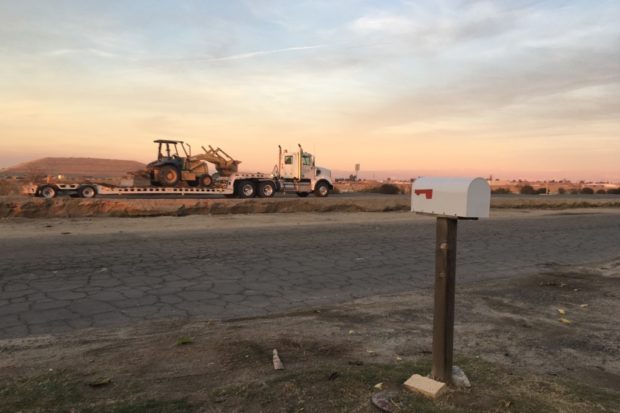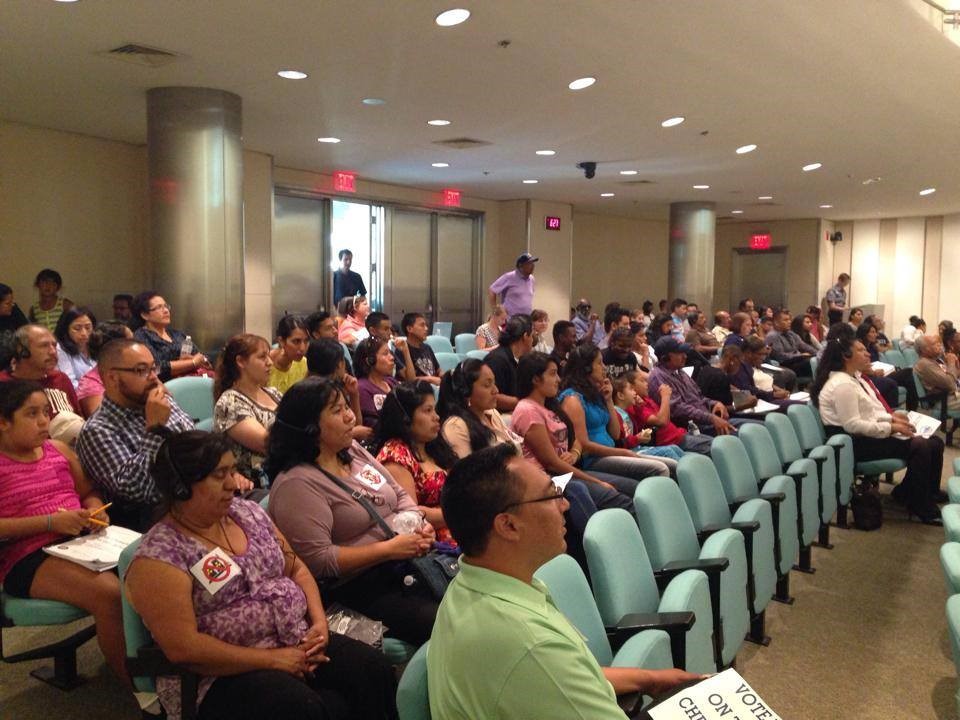
By Ashley Werner
Based in Fresno, Leadership Counsel for Justice and Accountability works closely with residents and community leaders from disadvantaged communities throughout the San Joaquin and East Coachella valleys to eradicate injustice and eliminate barriers to opportunity based on wealth, race, income and place that plague our region.
Leadership Counsel strives to support residents in identifying and achieving their goals for their community by affecting local, regional and state decision-making processes to hold their elected leaders accountable to effectively represent their communities. In conjunction with community residents, Leadership Counsel works to ensure access to basic municipal infrastructure and services such as safe and affordable drinking water, adequate sanitation, sidewalks and streetlights; transportation options; quality affordable housing; and a healthy environment.
At a recent regional meeting of community leaders from Merced County to Kern County, residents shared impassioned responses to what the term home meant to them. Home, they said, is a place where you spend time with your family and loved ones and where you are safe. It is a space where you can be tranquil and where you find shelter from rain and heat. For many at the meeting, home was a dream long pursued and hard won as immigrants who traveled thousands of miles to make a better life for their children.
While home plays a cherished role at the center of the lives of many residents of the San Joaquin Valley’s disadvantaged communities, the experience of home for these residents is also shaped by concentrations of polluting and noxious land uses that ring, intersect and dot their communities.
In cities and counties throughout the region, the same pattern appears: heavy industrial, biomass, agricultural processing, and hazardous materials facilities and vacant land zoned for these uses are disproportionately and almost exclusively located in and around low-income communities of color. Meat rendering plants, slaughterhouses, chemical warehouses, oil wells, fracking sites, dairy waste processing plants and landfills sit next to homes, schools, parks and places of worship in disadvantaged communities.
For disadvantaged communities in the Central Valley, the disproportionate siting of industrial, hazardous material and agricultural processing facilities in their communities has serious consequences. Many of the state’s disadvantaged communities that are the most burdened by multiple sources of pollution are located in the Central Valley, with the top-ranking community located in the 93706 zip code, according to the California Environmental Protection Agency’s CalEnviroScreen 3.0 tool. A 2012 study by the Central Valley Health Policy Institute found that the life expectancy of residents in West Fresno is 20 years less than residents in the Woodward Park neighborhood.

Polluting, noxious and hazardous land uses, especially when not properly regulated, can undermine neighborhood quality and public health by degrading air quality with toxic emissions and dust, generating sickening odors, contaminating drinking water, and creating constant noise and vibration from facility operation and the passage of trucks serving facilities. Trucks traveling to and from these facilities put the safety of residents reliant on public transit and schoolchildren in disadvantaged communities at risk who must walk along local roadways that lack sidewalks, streetlights and street crossings.
With their myriad impacts, concentrations of polluting facilities undermine home values, contributing to the enormous racial wealth gap that persists across the United States. At the same time, they consume land that otherwise could support public and private amenities, such as affordable housing, educational centers, medical clinics, fresh food options and retail, which are direly needed and sought by residents. And while low-income communities of color bear the burden of these facilities, residents from outside of the community often occupy a disproportionate majority of the jobs associated with them, in the absence of targeted local hire policies and incentives.
The concentration of polluting and noxious facilities in and around disadvantaged communities in our region and throughout the United States is a historical legacy of explicitly racially discriminatory policies and practices that created and enforced patterns of segregation while allowing and encouraging the siting of these land uses in communities of color over the objections of community residents.
It is also the product of ongoing policies and practices that disregard and reinforce this racially discriminatory legacy through actions and omissions, such as local government’s use of its land-use powers to maintain and create new zoning and development standards that allow new hazardous and polluting facilities to locate and operate in low-income communities of color with no public input or oversight.
Yet for as long as cities and counties have sited these facilities in residents’ backyards (or front or side yards), community leaders have called on their elected leaders to uphold their right to a healthy environment and to meaningfully participate in land-use decision-making processes that might dramatically affect their lives.
Residents’ enduring passion for “home”—for themselves, for their loved ones, for their entire community—has motivated them to envision the future of which they dream and seek avenues for change. Residents have sought and won rezoning of heavy industrial districts that permeated their communities for decades to zoning for the parks, schools, grocery stores, retail and housing that their neighborhoods desperately need. They have succeeded in directing millions of dollars in investment to the state’s most disadvantaged neighborhoods—from Thermal to Lamont to West Fresno—to turn this zoning into beneficial projects and land uses that will improve community health, create local jobs and expand access to opportunity.
Opportunities abound, and the work continues.
To learn more about the work of Leadership Counsel, visit www.leadershipcounsel.org.
*****
Ashley Werner is a senior attorney at Leadership Counsel for Justice and Accountability. She works to keep decision makers accountable through her advocacy to ensure access to basic services and infrastructure, affordable housing, and a healthy and safe living environment for all residents. Contact her at awerner@leadershipcounsel.org.
